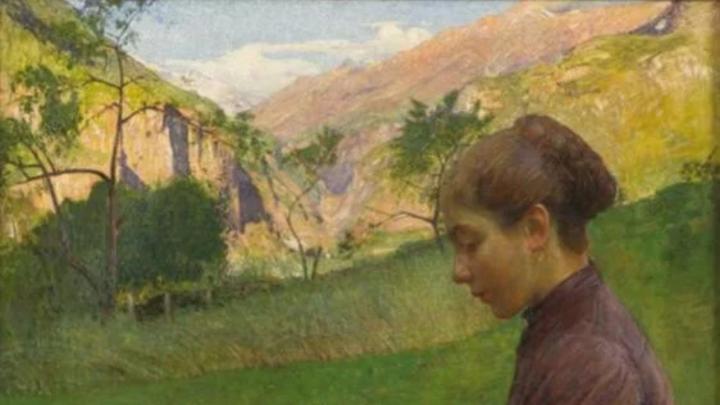Paesaggi Narranti (Landscapes that tell a story with texts by Tullio Bagnati) was born from the collaboration between the Landscape Museum of Pallanza and CAI (the Italian Alpine Club) Verbano. On the occasion of the 150th anniversary of the Verbano section of the club, the works in the museum's art gallery are displayed, highlighting environmental changes, the transformation of Alpine life and the evolution of the way people relate to the mountains, in a shared time-space.
“(…) the description of a landscape, being full of temporality, is always a story: There is a moving ego that describes a moving landscape, and every element of the landscape is full of its own temporality, that is, the possibility of being described in another present or future moment..."
(Italo Calvino, Ipotesi di descrizione di un paesaggio (Hypothesis of a description of a landscape), in: Esplorazioni sulla via Emilia, 1986 (Explorations on Via Emilia, 1986)
The "Calvinian" exergue clearly leads us to the method of diachronic reading of the landscape, to a narrative "charged with temporality" which was (and is) the key to understanding, which led us to the suggestion of a "crossing" of the rooms of the section of the museum regarding landscape painters, with a simultaneously retrospective and anticipatory eye on what has happened in the 150 years since the foundation of the CAI (Italian Alpine Club), Verbano group. Nature was already the central theme of landscape painting in its various forms and techniques (naturalism, landscape painting, en-plein air painting, etc.). However, as Eugenio Turri writes “you look at the landscape and become spectators of it in different ways. We let ourselves become imbued with the impressions that the vision produces, or we can try to understand”, also when observing a painting. This is how it was: spectators and actors with reading codes, even arbitrary ones, which help us give meaning to what we see..
A narrative and a temporality that also leads us to Antonio Massara’s thoughts on the landscape; Antonio Massara was the founder of the museum who in 1922, in the Historical Bulletin for the Province of Novara, wrote: "The landscape is not static but, “dynamic”, a word which is too often used today... ”.
Walking is said to be an important practice in life, and by letting yourselves be accompanied by the works in these rooms of the Museum with your own hypotheses of description of a landscape and a free stroll, it is perhaps even more so.
Index of works:
Veduta di Intra dal lago, s.d. Luigi Litta
View of Intra From the Lake, no date Luigi Litta
Cascata del Toce, 1890. Federico Ashton
Toce Waterfall, 1890. Federico Ashton
Gola di Gondo, 1880. Federico Ashton
Gondo Gorge, 1880. Federico Ashton
Le gelide acque del lago di Marjelen, 1908. Carlo Cressini
The Icy Waters of Lake Marjelen, 1908. Carlo Cressini
L’aratura a Miazzina, 1900 ca. Achille Tominetti
Ploughing in Miazzina, around 1900. Achille Tominetti
Fanciulla a Varzo, 1901. Luigi Bolongaro
Girl in Varzo, 1901. Luigi Bolongaro
Fletschhorn, 1900. Eugenio Gignous
Fletschhorn, 1900. Eugenio Gignous

